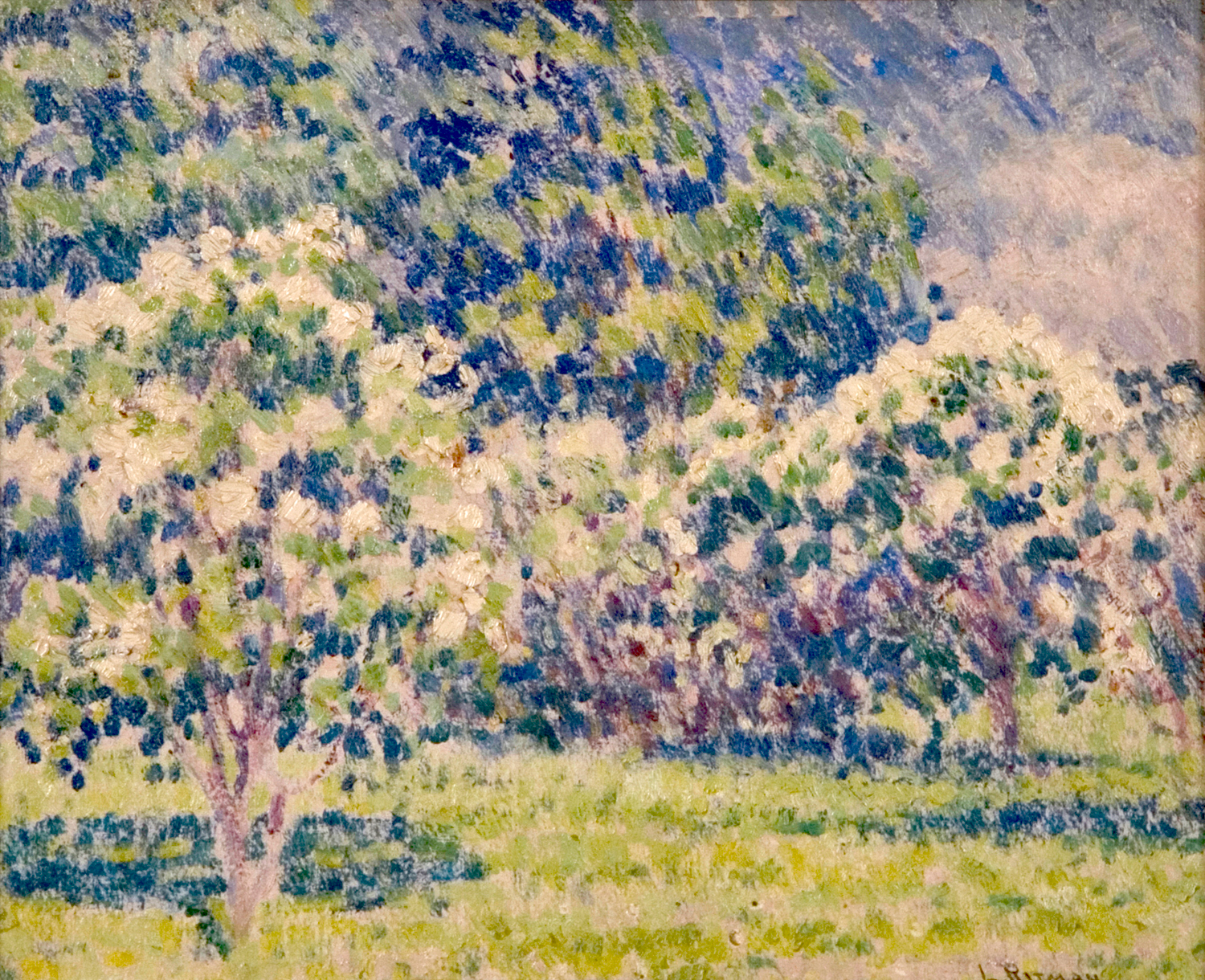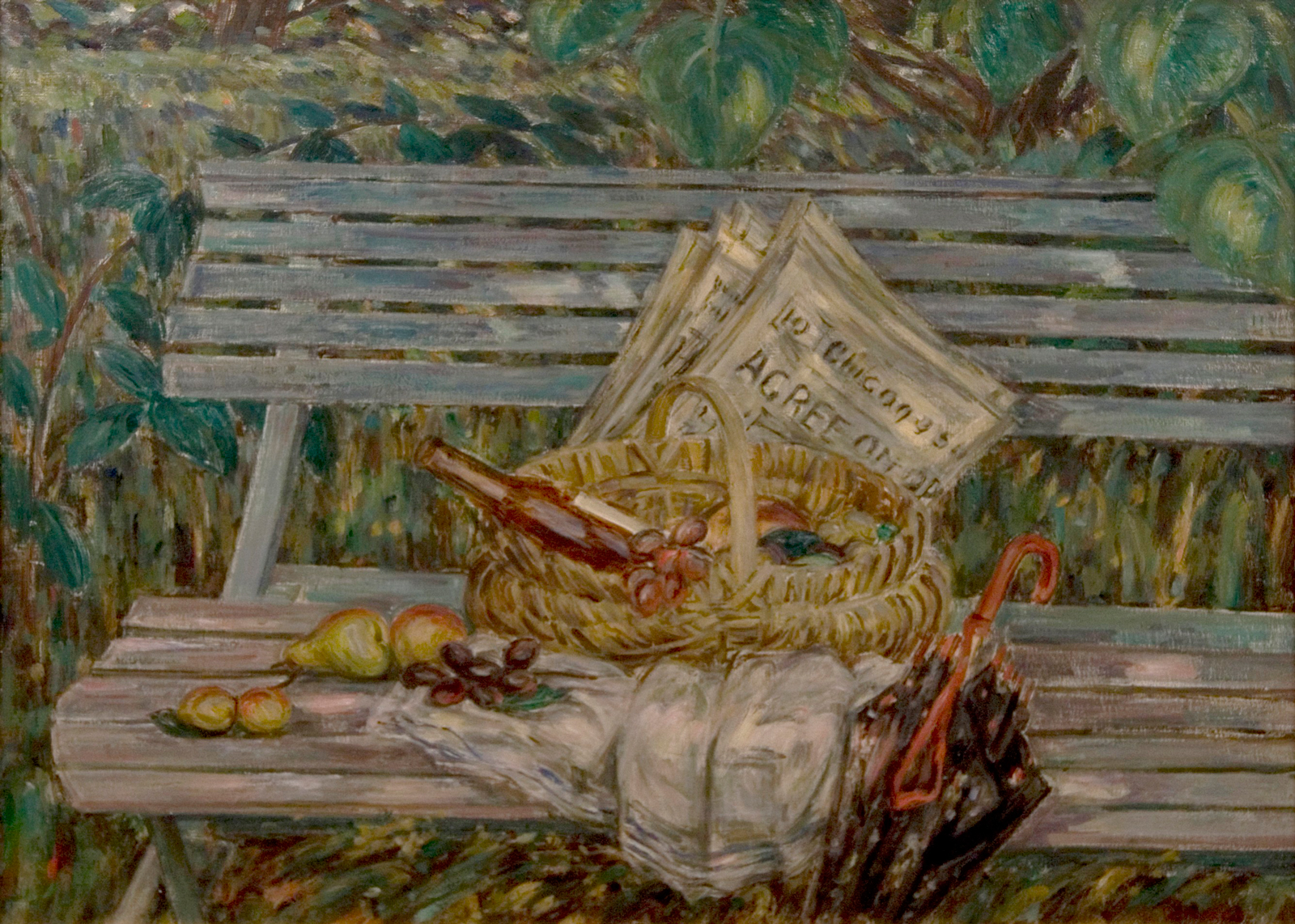Louis Ritman
Louis Ritman (1889-1963) was one of the group of Giverny Luminists, a protégé of both Lawton Parker and Frederick Frieseke, whose early impressionist works of delicately rendered female figures amidst a “riot of bloom” gave way later to landscapes with Cézanne-esque flattened planes and rectangular forms.
Born in Kaments-Podolsky, Russia, Ritman and his family immigrated to the United States around the turn of the century. Ritman painted signs during the day to help support his family and took art classes at a number of Chicago institutions in his spare hours. One of these was the Chicago Academy of Fine Arts, where Lawton Parker first encountered Ritman’s work, awarding him a scholarship and encouraging him to come to Paris. By 1909 Ritman had saved up enough to make the trip; though the Académie Julian and the Ecole des Beaux-Arts provided a solid education, it was an invitation to Giverny that allowed Ritman’s art to blossom.
Between 1911 and 1929 Ritman summered at the artists’ colony, painting alongside Frieseke and Richard Miller and making use of Parker’s studio and models. In 1914 Parker exhibited Ritman’s work at his Chicago studio, increasing his international reputation; critics praised the sunlight and “youthful buoyancy” of his canvases. Around 1915 saw the shift in Ritman’s style, where a heavier touch with the palette knife and larger swaths of more naturalistic blocked color replace the small, fleeting daubs of paint and rapidly shifting, bright tones from before; one critic remarked on the “wizardry” of the color arrangements in this more mature style. In 1930, a year after returning to the United States, Ritman was offered a job at the School of the Art Institute of Chicago, where he taught portrait and figure painting for decades.

